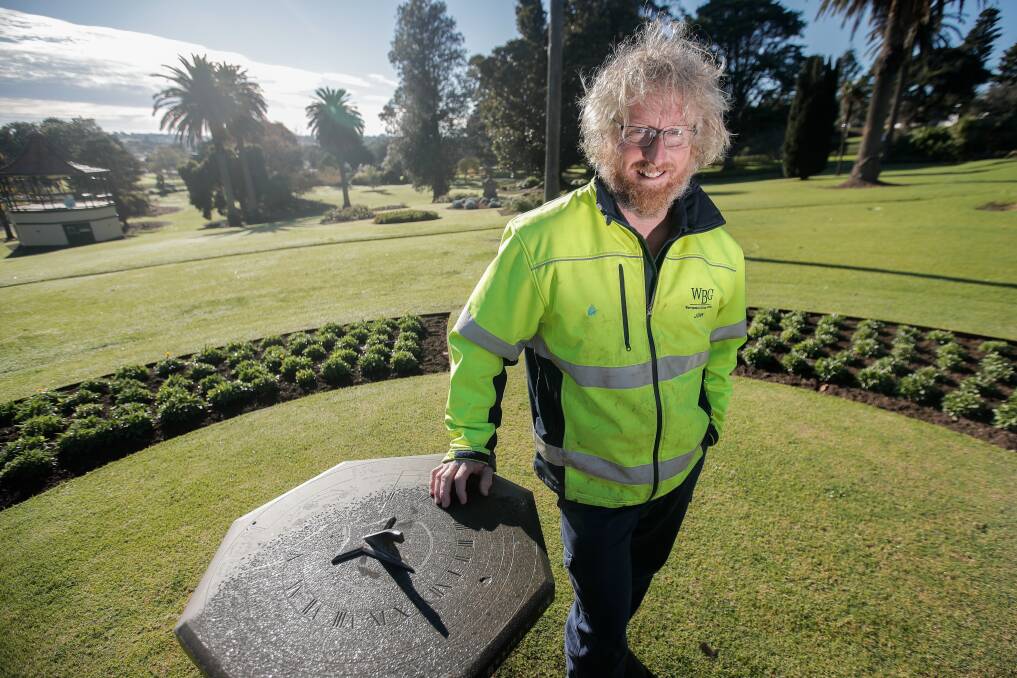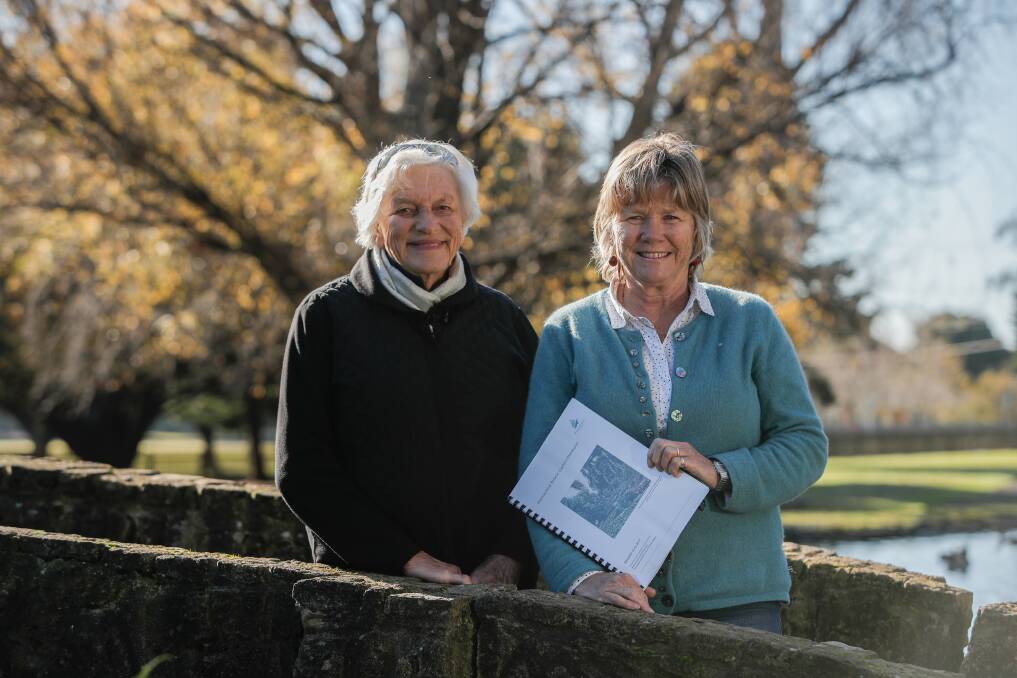
Warrnambool Botanic Gardens is a jewel in the city's crown. RACHAEL HOULIHAN explores the masterplan developed for the popular attraction.
MANY residents and visitors to Warrnambool have fed the ducks, let their children climb over the cannon or whiled away an afternoon in the city’s Botanic Gardens.
Subscribe now for unlimited access.
or signup to continue reading
A newly-approved masterplan for the much-loved city attraction is aiming to ensure those pastimes continue long into the future.
A vision for the gardens was developed as the guiding statement for the masterplan, and refined following community feedback.
The vision is: “Warrnambool Botanic Gardens is a serene and beautiful heritage landscape; a special place that encourages us to celebrate the past, enjoy the present and develop a sustainable future for current and future generations”.
Warrnambool City Council approved the masterplan this month, which guides future improvement, development, and management of the gardens for the next 15 years. The council’s community policy and planning manager Lisa McLeod said the document was “realistic”.
“It’s a very do-able plan,” she said. “The engagement process was really positive and that has added to the outcome.”
Some of the masterplan’s ‘high priority’ recommendations include:
- Constructing a new toilet block in the northeast corner and retaining existing toilets for staff
- Upgrading the irrigation system for more sustainable and efficient use of water and labour
- Investigating costs to upgrade the rotunda to facilitate regular public access
- Undertaking a cost/benefit analysis in regard to installing free Wi-Fi
- Constructing an elevated walkway to the north side of the fernery to avoid the Moreton Bay Fig trees’ root buttress
- Constructing a concrete footpath on the northern perimeter (along Botanic Road)
- Installing boardwalks or flexible surfacing to create accessible and safe paths where tree roots are affecting pathways
- Providing disabled car parking spaces at the Botanic Road entrance
- Installing additional interpretive signage describing Guilfoyle's design philosophy, plant names and horticultural features
Curator John Sheely, who has worked at the gardens for 11 years, said the masterplan was community driven.
“It’s all about meeting the community’s needs and maintaining the heritage of the gardens, in acknowledgement of the 150 years they have existed for,” he said.
“I viewed it as a bit of an external audit in terms of what we could do better and other people’s visions.”
He said it would be great to get an elevated walkway around the fernery established, and another high priority was an automated irrigation system.
He said an elevated walkway would give a “different visitor experience”.
“From a community point of view, it would be great to see the new toilets become a reality,” Mr Sheely said.
City’s haven loved by all
The gardens’ trees, pond and ducks are its biggest drawcard, visitors say.
Extensive community engagement was undertaken by Warrnambool City Council to explore what visitors, residents and stakeholders loved about the gardens, and the changes and improvements they would support in the future.
All up 73 surveys were completed and eight submissions to the plan received.
Conversations were held at the Australia Day event in the gardens in 2016 and interviews with key stakeholders were also conducted.
The message from the community consultation was clear – people enjoyed and valued the gardens, but often reflected that they did not go there as often as they should.
The top five things people said they loved about the gardens were the trees, the pond and ducks; the open, grassed areas; the gardens’ peaceful character and presentation/maintenance; and the botanical variety.
The top five things people said they would like changed or improved included more trees and plants; improved toilets; better access and walkways/paths; more information and signage; and more places to sit or play.
The gardens were originally established on a site near the Hopkins River in east Warrnambool.
William Guilfoyle was commissioned by the Borough of Warrnambool in 1877 to design the layout for the gardens.
Current-day curator John Sheely said it was pleasing the community loved the trees and wanted more.
“I want people to come in and experience the gardens and actually have a bit of ownership of them,” he said.
“They are a massive community asset. The council has committed 150 years of budget for the gardens, and I think that needs to be acknowledged.”
The existing public toilets are located west of the Curator’s Cottage, but the council’s 2014 Public Toilet Strategy identified the block as unsuitable for public use and recommended the construction of a new facility.
Another high priority is linking the gardens with Swan Reserve.
“We are looking at Swan Reserve as an annex to the gardens,” Mr Sheely said.
“People can obtain a greater visitor experience, in terms of looking at a heritage garden and then a water-wise garden at Swan Reserve.”
They are Crown Land gazetted for botanic gardens with the council appointed as the committee of management.
In 2006 the gardens were added to the Victorian Heritage Register.
Its citation was for historical, scientific, aesthetic and social significance to Victoria.
Gardeners Andrea McLeod and Ros Raymond assist Mr Sheely to keep the gardens in perfect condition year round.
Friends working for a blooming future
The Warrnambool Botanic gardens have a strong, supportive ally, working to preserve its history and heritage.

The Friends of the Warrnambool Botanic Gardens’ (FWBG) aim is to maintain and develop the precinct as an outstanding William Guilfoyle garden.
FWBG president Pat Varley and secretary Mandy King attended the June Warrnambool City Council meeting where the masterplan was adopted.
“It was inspiring to hear councillors talk about the importance of the gardens to Warrnambool, and their high standing in the botanic world,” Mrs King said.
“They praised John Sheely and his staff for the transformation in his time as curator, and they praised the Friends of the Gardens for their dedication and commitment over many years.
“We were pleased to hear them make a commitment to implementing the masterplan, showing their ongoing support to the gardens.
“We came away feeling a bit chuffed that the councillors were very positive.”
Mrs King said the masterplan was important for the gardens’ future.
“We have a good document and a good plan going forward,” she said.
Dr Varley said the council had maintained the integrity of the gardens and the first priority for upgrades was new toilets.
“It’s something that is really badly needed,” she said.
“We were thrilled to see that was given such a high priority, as well as irrigation.
“The current situation not only wastes staff effort, but it wastes water. If we can have it automated we can do it at night.”
FWBG welcomes new members.
Its annual general meeting will be held on July 19 at the Hammond Centre, Christ Church, Henna Street, Warrnambool.
The National Trust’s horticulture manager Justin Buckley will be a guest speaker.
Visit http://www.wbgardens.com.au/friendswbg for more information.














